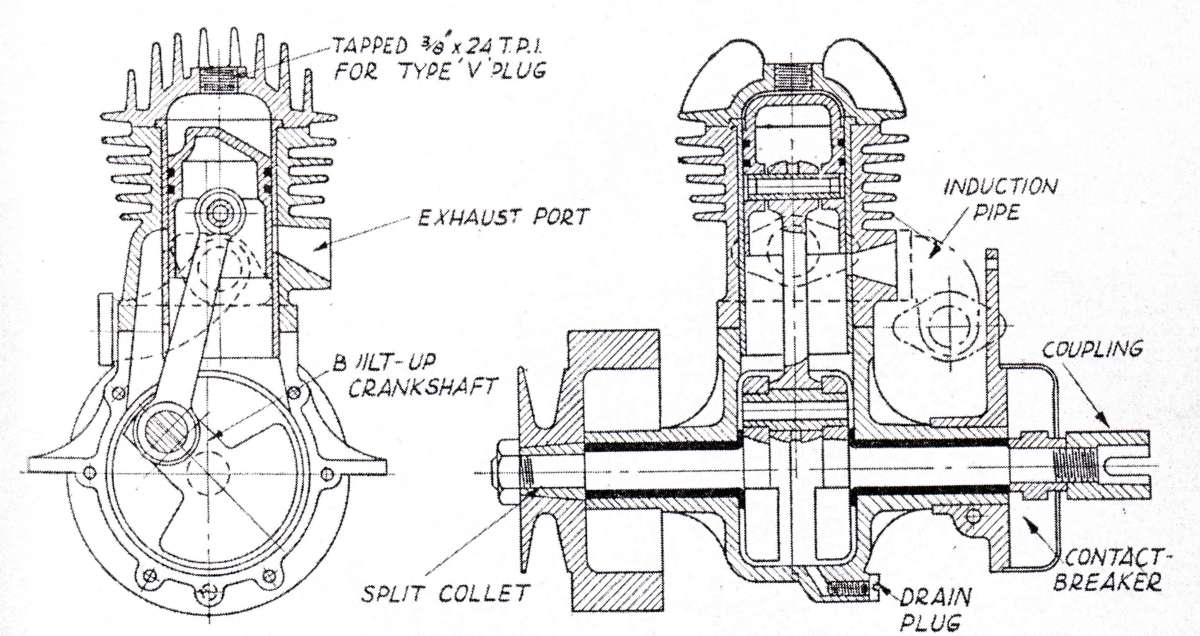Not enough “meat” to make a threaded plug adaptor?
It sure is a handsome looking engine, and you have made a lovely job of it. A real olde worlde look to it. Shame the castings are no longer available. Looks like a fun project.
Re the earlier posts about the offset cylinder, the offset “Desaxe” cylinder is usually used for two reasons. One is the offset provides greater leverage on the crankpin on the power stroke, thus increasing power, while at the same time reducing side-thrust on the piston, thus reducing friction. Was used for this reason as far back as steam engine days, then by Henry Ford on his sidevalve (flathead) V8s, and now by Yamaha on their latest high-performance sport motorbikes. I believe the Norton Commando in the 1970s used it too.
The other reason is the offset means the downstroke is longer than the upstroke, in degrees, due to the geometry. Very counterintuitive but a well established principal in engine building circles. So on a two stroke, you get asymmetric port timing, allowing the transfer port and exhaust to stay open longer on the down stroke than the upstroke, which supposedly aids cylinder filling and boosts performance.
Old ET was a cunning operator.
Ches Green UK.










